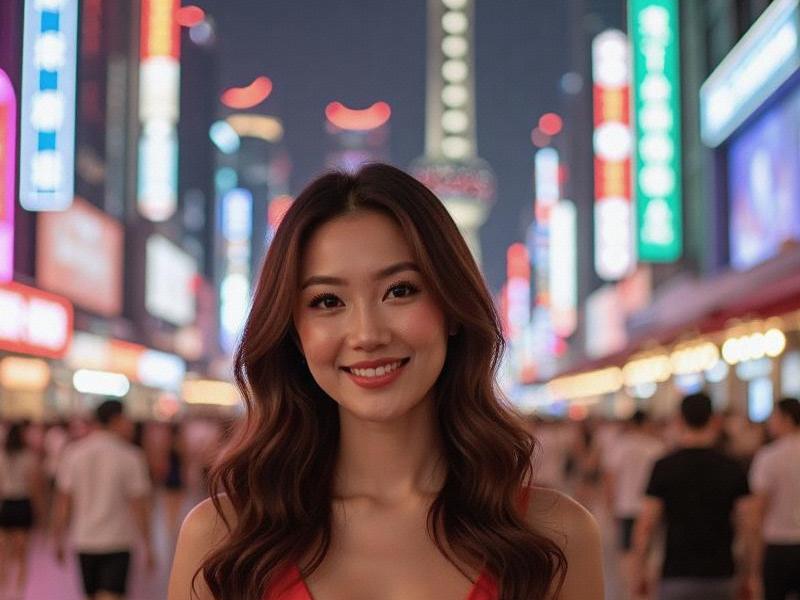This in-depth feature explores how Shanghai's women are blending traditional Chinese aesthetics with global influences to crteeaa distinctive style that's reshaping Asian beauty standards.

The morning rush at Jing'an Temple station offers a masterclass in Shanghai's unique feminine aesthetic. Among the crowd, investment banker Miranda Chen adjusts her Dolce & Gabbana blazer with one hand while clutching a steaming cup of chrysanthemum tea in the other - her French manicure contrasting beautifully with the vintage jade bracelet inherited from her grandmother. Nearby, art curator Li Wenxin discusses her upcoming exhibition in flawless English, her qipao-inspired dress subtly modified with contemporary cutouts. This is the Shanghai woman of 2025 - a living embodiment of East-meets-West sophistication that's captivating global attention.
Shanghai's beauty phenomenon has deep historical roots. "The Shanghainese feminine ideal emerged during the 1920s treaty port era," explains cultural historian Professor Zhang Wei from Tongji University. "What we see today is a 21st century evolution of that hybrid sensibility - women who can quote Confucius while debating blockchain technology." This cultural duality manifests in surprising ways: data from Tmall shows Shanghai women account for 42% of China's "fusion beauty" purchases - products like Estée Lauder serums infused with ginseng or Dior lipsticks in shades inspired by Ming Dynasty porcelain.
上海龙凤419是哪里的 The city's beauty routines reveal fascinating contradictions. While Shanghai boasts China's highest concentration of La Mer boutiques (9 locations), traditional remedies are experiencing a renaissance. The century-old Tong Han Chun pharmacy now reports 35% of its gua sha tool customers are women under 30. "My skincare combines great-grandmother's jade roller with LED light therapy," laughs tech entrepreneur Fiona Zhou during her lunch break at the Bund Finance Center.
Career success forms another pillar of modern Shanghai femininity. In Lujiazui's gleaming towers, women now hold 41% of executive positions in multinational firms (2025 Shanghai Women's Federation report). What's remarkable is how they're redefining workplace aesthetics. At global law firm Baker McKenzie's Shanghai office, "power dressing" now incorporates subtle Chinese elements - think tailored suits with knotted buttons or briefcases featuring embroidered silk linings. "We call it 'steel-and-silk' professionalism," says partner Jessica Wang. "Being razor-sharp in business while honoring our cultural heritage."
上海喝茶群vx
The creative industries showcase this cultural confidence most vividly. At M50 art district, women-led studios are reinventing traditional motifs - digital artist Lin Yi's viral "Neo-Shikumen" series blends 1930s architectural details with augmented reality. Meanwhile, homegrown fashion brands like Comme Moi and Ms Min have gained international followings by reinterpreting Shanghainese elegance for global runways.
上海喝茶服务vx Yet challenges persist beneath the polished surface. The pressure to maintain "flawless jade skin" fuels Shanghai's $2.6 billion beauty industry, but also drives concerning trends. Plastic surgeon Dr. Wu Jian reports a 25% annual increase in requests for "natural-looking" procedures among college students. In response, grassroots movements like MyShanghaiFace celebrate distinctive local features rather than Westernized ideals.
As twilight paints the Huangpu River gold, the full spectrum of Shanghai femininity comes alive. Social media influencers film makeup tutorials against the neon skyline while grandmothers in linen pajamas practice tai chi along the waterfront. In this city where colonial-era buildings house AI startups, perhaps the true Shanghai beauty secret is this: the wisdom to cherish one's roots while embracing the future. As fourth-generation Shanghainese designer Victoria Zhang observes: "Our magic isn't in choosing between East and West - it's in creating something entirely new from both."